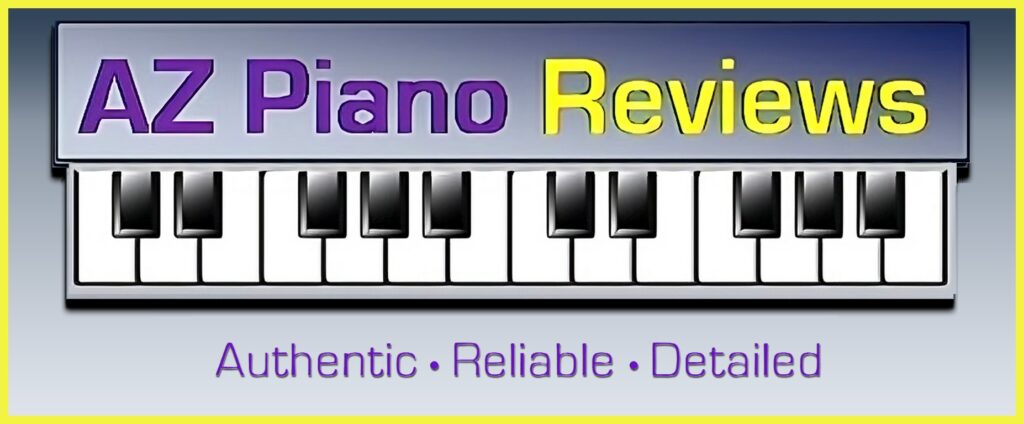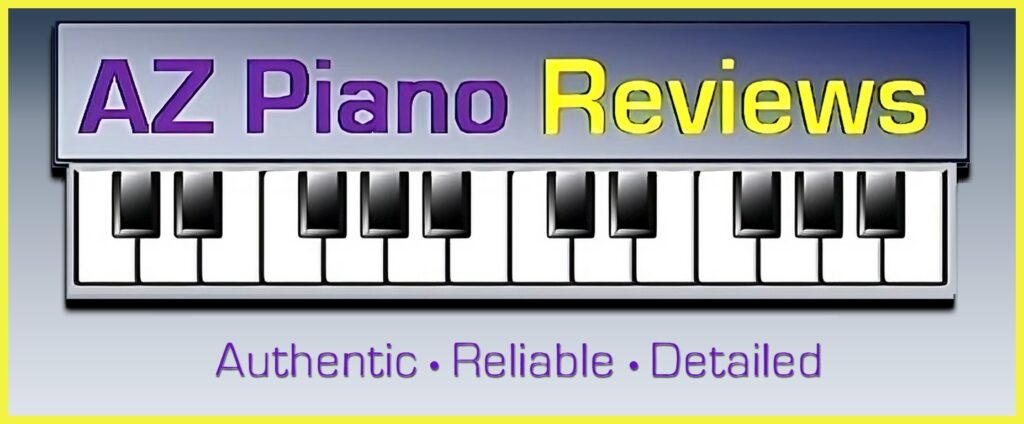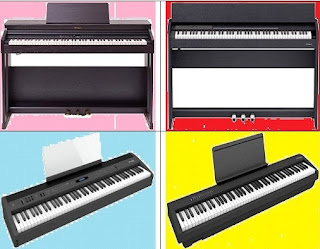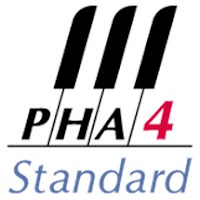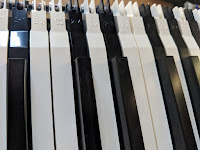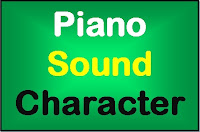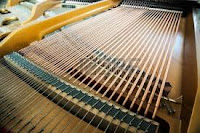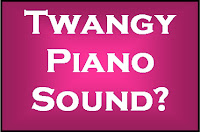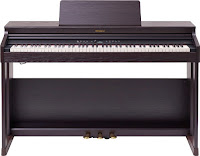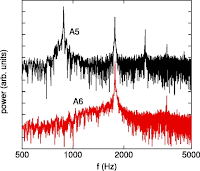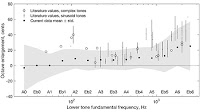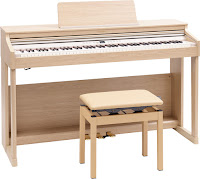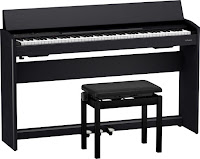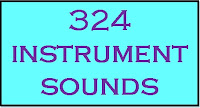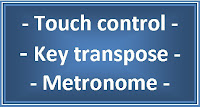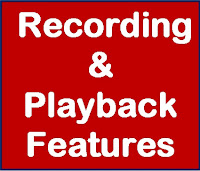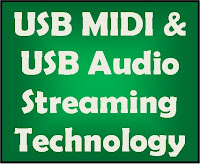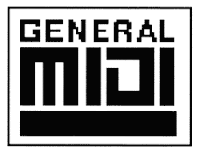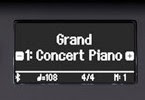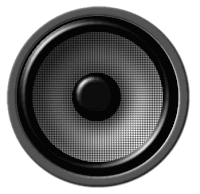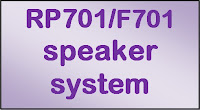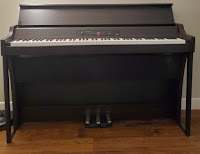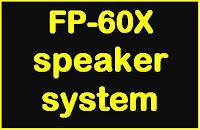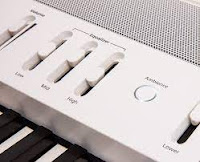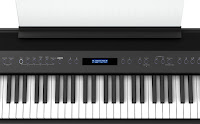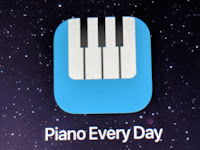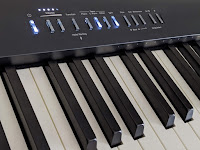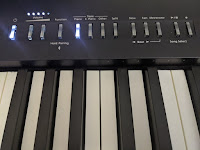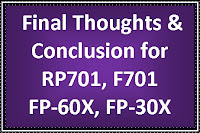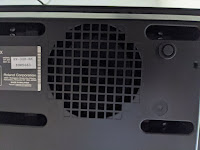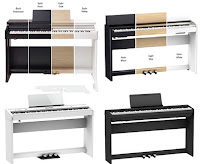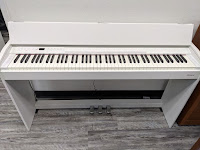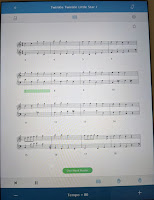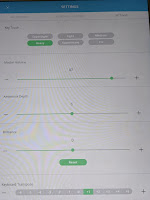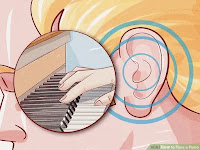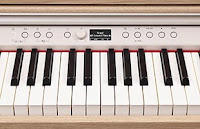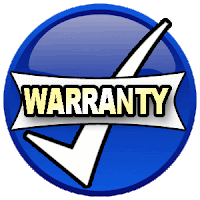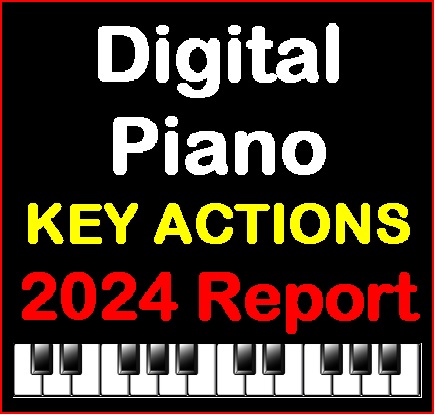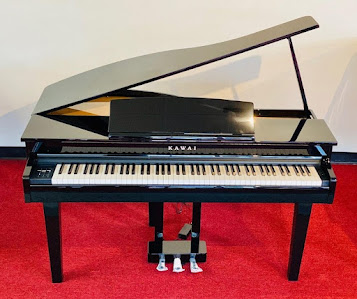UPDATED REVIEW & COMPARISON
– Nov 1, 2023 – Roland RP701, Roland F701, Roland FP-60X, Roland FP-30X | Digital Pianos under $2000 for 2023. These 4 new digital piano models called the RP701 at $1499 price (with instant rebate), F701 at $1399 price (with instant rebate), FP-60X at $999 price (with instant rebate), and FP-30X at $699 price are the latest pianos from the Roland music & audio products company. They all have a few important things in common and that is why I am comparing them together in this one review.FIRST IMMEDIATE IMPRESSIONS
ROLAND KEY ACTION
In the Roland digital piano line going up to their top digital baby grand model, they have a total of 3 different piano weighted key action models which I call “good, better, and best.” In all 4 of these new digital piano models that I am talking about in this review, Roland uses their “good” entry level key action called PHA-4 Standard which they have had out for well over 5 years in their previous models. It is overall a solid, dependable key action with good key weight and movement which is also a “graded” key action like many other brands have and this Roland key action has some additional features including 3 key sensors per key (under each key) for better repetition recognition, simulated ivory and ebony key tops for a more tactile feel, and a simulated “escapement” feature which tries to recreate the feeling you get when pressing on grand piano keys very lightly and feeling a slight bump or hesitation when pressing down on the keys.
Overall this entry level Roland PHA-4 Standard key action is good as well as reliable but it does have a couple of drawbacks for some people such as the keys making some noticeable knocking noise when pressing down on the keys harder and when they hit bottom there is a kind of “thunking sound.” If you are playing harder with lower volume on the piano sound then you’ll likely notice the key action noise. But as you increase the piano volume and get it much louder and/or decrease how hard you are playing on the keys then the noise is not near as audible so it just depends on how you are playing and using any one of these models since they all have the same key action.
The other drawback is that some people feel that the PHA-4 Standard key action is somewhat firm or a bit heavy when pressing down on the keys.ROLAND PIANO SOUND
Another common feature among these 4 Roland digital piano models is the piano sound chip/sound engine otherwise known as the “sound engine.” This sound chip is upgraded from the previous one in the older models with more accurate dynamic tone changes when pressing down on the
keys from hard to soft and everywhere in between. It is very smooth and the transitions in expression are even when playing at different velocities and trying to musically express yourself. So in terms of expression and dynamic tonal range these 4 Roland models are all the same in that way and they use a 256-note polyphony chip with a technology which they call SuperNATURAL which is simply Roland’s marketing name for their piano sound engine. In essence the realism of the piano sound is really what matters and for me personally, I really don’t care what they call their technology, I am just wanting to hear a natural piano sound up and down the keyboard when I play regardless of how hard or soft I am pressing down on the keys and using my damper sustain pedal. I Just want it to sound good and that is the end goal for me when trying out these various pianos.
As far as the actual piano sound on these 4 models go, since they all have the same piano sound engine, and apart from any differences in their internal speaker systems and how they output the sound (and there are some differences), the character of the piano sound will be identical in all 4 of these models. That is where these pianos fall somewhat short in my opinion. There are 2 issues I have with the piano sound engine in these models and I have already outlined my concerns in detail in my extensive review of the lower price FP-30X portable model. The 1st issue is the actual character of the piano sound in these models…it is just too brassy, metallic, and twangy for my musical tastes. In all regular acoustic pianos, depending on the brand, size, and type of materials used in producing those pianos, the sound can vary quite a bit from brand to brand and model to model. But a basic way in describing piano sound is that it can be mellow and muted, more mellow but full, a bit brighter, rich, and resonant, or bright brassy and metallic.
I find that most people prefer the first 3 descriptions of a piano sound and fewer people prefer the 4th description being bright, brassy and more metallic sounding. Personally I love the piano sound to be rich, full with some brightness to it when playing at different velocities but definitely don’t want it to be too bright and brassy and too metallic. Another term for too metallic is “twangy” when metal (metallic) strings vibrate too much and the wood soundboard amplifies those strings in a way that becomes twangy and that overpowers the regular piano sound. This can happen in real pianos depending on the type of strings that are used in the piano, the type of felt hammers, and the type of soundboard, among other things. That’s one of the reasons there are so many new different acoustic pianos for sale out there because there are noticeable differences in the key action movement and the piano sound.
The piano sound engine in all 4 of these Roland pianos are identical as I mentioned before, so there are no differences in that way. When playing music on any one of these models, there are a variety of piano sounds on them and each one of the available acoustic pianos sounds seem to be very nice when playing on the keys with less velocity and less expression. So when you are playing softer and lighter then the pianos sound good and have a good range of tonal changes and seem to have a good piano tone. But when I was playing using this new piano sound engine the piano sound was very bright and metallic especially when playing the keys harder with more velocity and power.
I have played hundreds of top name acoustic and digital pianos over the years and I like many of them and enjoy playing a variety of models. But there are certain things that I do not personally enjoy when it comes to piano sound and an overly bright, metallic sound is one of those things I don’t like. These Roland pianos do not exhibit this overly metallic and twangy sound when playing the keys more lightly with minimal finger force. But it is noticeable when you start adding more power to your playing and increase the finger force you are using. All pianos (acoustic and most digitals) brighten up when you do that and exert more finger force on the keys but this Roland piano sound engine is just too bright & twangy metallic in that way for my musical tastes. I do like a lot of different styles of music but can do without it being so bright and metallic when playing a song. However, for someone else this may not be an issue and you may like that type of sound since listening to piano sound is an individual thing because we all have different ears.
ROLAND PIANO “STRETCH TUNING” ISSUES
The other thing about the piano sound in these 4 models that is a noticeable issue to me is the piano “stretch” tuning. You would not normally think any digital piano would have an issue with tuning since they have been permanently and digitally tuned so that you don’t need a piano tuner to come to your home to do that on a digital piano. Tuning is pre-done for you and you should not need to make any adjustments. These Roland pianos can be tweaked a little bit with regard to tuning using their Piano Designer feature/app that allows you to go into the editing portion of the piano and tweak or change tuning and voicing on individual notes so that you can make changes depending on what appeals to you assuming you don’t like how the factory piano settings sound to you.
But in the case of these 4 digital pianos, Roland uses a permanent tuning method called “stretch tuning” which is the way most piano technicians tune real acoustic pianos. Due to the fact that real pianos have well over 200 individual strings inside of them, there can be issues with getting the frequencies, overtones, and inharmonicities to “gel together” in an overall pleasing tone and tuning to the ear. It means that when tuning a real acoustic piano, the piano tuner must tune the upper strings a bit sharp and some of the lower strings a bit flat so that they can balance out these organic tonal elements so that the tuning comes out to be rich, resonant, and please to the earing while sounding “in-tune” instead of “out of tune.” This type of tuning takes practice and some precision and ultimately is an “art-form” in that the overall result of that tuning is pleasing to the ear when you are playing your music.
Some people can easily tell when a piano is out of tune and needs a good tuning and other people cannot tell when a piano is out of tune to save their life. Some people have a natural sense of when notes played together are out of tune with each other because those people have either played pianos in the past or they listen to music quite often and can just hear it being in tune or out of tune. For some people when a real piano is out of tune then they don’t enjoy playing on it or listening to it and yet other people cannot tell that it is out of tune so they don’t know, and then they are not bothered by it when a piano has gone out of tune. It is easy to tell (at least for me) when a piano is out of tune when you play a group of notes together with as little as 2 notes being played at the same time in different octaves or many more notes than that being played simultaneously.as chords in different parts of the keyboard.
When tuning a real piano the piano tuner technician generally uses a tuning method called stretch tuning. In the case of these 4 new Roland digital pianos, all of them sound like they are tuned much too sharp on notes in certain octaves and when those notes are played together with other notes in lower octaves, the piano then sounds out of tune to me because certain notes sound extremely sharp and when playing those notes it becomes very distracting and not enjoyable for me to play. It’s not always like that depending what notes I am playing on these Roland pianos but it does frequently happen and the specific sharp tuning changes a bit depending on which acoustic piano sound I have chosen in the piano.
ROLAND RP701 & F701 FEATURES & FUNCTIONS
Now I will talk about the new Roland RP701 and F701 home furniture cabinet pianos although much of the technology features are also in the portable models FP-60X and FP-30X. Unlike the RP and F models in past years that were different in a number of ways from each other, these two new cabinet models are identical in every way except for the cabinet design, and that makes sense considering these two models are only $100 apart in price. The RP701 has the more “traditional” cabinet design and the F701 has the more contemporary compact design so it’s just a matter of taste as to which aesthetics/appearance you like best. Both the F701 and RP701 are available in different color cabinets with the F701 having 3 colors including matte black, matte light oak, and matte white and they all come with a matching height adjustable
bench which is a good thing. The RP701 comes in 4 color cabinets including matte black, matte dark rosewood, matte, light oak, and matte white and they all include a matching height adjustable bench. The RP model also has a 1/2 size privacy panel on the back which hides part of the wall behind it, but not all. Some privacy panels in this price range are 3/4 size or even close to full size privacy panels which would be an even better solution in hiding whatever is behind the piano when it’s up against a wall, etc. Just so you know, previous Roland F & RP models did not have a big choice of cabinet colors and they also did not have height adjustable benches so Roland has definitely stepped up their game in terms of what they offer in cabinet choices, colors, and benches even more so than other name brands in this price range.
The F701 and RP701 offers a lot of cool features that can be fun to have including 324 instrument sounds like pianos, strings, brass, woodwinds, synths, special effects, etc. So there are a ton of sounds for people who may like to have that kind of thing although most people primarily care about the “piano playing experience” as opposed to have hundreds of instrument sounds and this true for other brands as well. Nevertheless, you may enjoy and find a use for all these additional fun instrument sounds. Roland also offers you the ability to layer or split any two instrument sounds in the piano for creating new sound set-ups as well as twin piano for 2 people to play the same notes at the same time on the piano which is helpful if 2 students are learning the same exact song and wanting to play it at the same time. The portable models also have hundreds of instrument sounds and effects as well.
You can also modify the “touch sensitivity” of the keys by altering the digital “attack time” so the initial piano sound can react sooner to your touch or a bit later to your touch when you press down any key. All digital pianos have this digital touch sensitivity control but most have 3 to 5 sensitivity changes that you can select which generally is more than enough. With these 2 Roland piano models you have 100 different touch settings that you can select on a sliding scale. It sounds like a lot of touch levels but in reality most people are happy with the standard 3-5 changes offered on most digital pianos. But…having 100 is impressive and way more than any brand or model for a furniture cabinet digital piano in this price range. The FP-60X also has 100 levels of touch and the FP-30X have 5 levels. all 4 models have a transpose/digital key change feature along with digital metronome which is adjustable for different time signatures such as 4/4, 3/4, 2/2, 2/4, 6/8, etc so that you can learn to “count” better and therefore have better timing when playing your music.
Roland has upgraded the digital recorder and playback features in these 2 new models by offering 3 track MIDI recording along with 1-track audio wav recording (with the exception of FP-30X) so that you can record separate tracks with MIDI enabling you to record left and right hand piano independently and play them back simultaneously along with recording a 3rd instrument track along with your piano playing. That is an impressive MIDI recorder because most digital pianos have 2 tracks of recording in the MIDI format as opposed to 3 tracks on these Roland pianos. The 1-track audio wav recorder records the actual sound of the instruments (piano, etc) that you are playing whereas the MIDI recorder does not record sound…it only records the key presses (notes) which means that you can play it back directly on the Roland piano but if you take that MIDI recording off the piano and try to play it elsewhere like your computer, etc, it will sound completely different.
The F701 & RP701 (and the portable models) can play back MIDI and audio wav files as I mentioned but they also can play back (but not record) in the MP3 platform, which is a new feature. So that means you could play back an Apple iTune or some other MP3 recording from another device because these new Roland models are able to play back an MP3 recording when you load it on a USB flash drive and put that drive into the F701 or RP701 or other Roland models. Roland has done a very good job in offering more recording and playback technology than they have had in previous models.
Another thing these 2 new models can do is “USB audio streaming” which is also true of the portable models FP-30X and FP-60X. When you connect a USB-MIDI cable from the piano to an external device like an iPad, when you play music from your iPad, that music travels through the USB cable back through your Roland piano and then you can hear that music come out of the speakers of your Roland piano. This means you do not need a separate audio input connector on the piano to do that anymore and this new USB audio streaming technology eliminates the need for more cables and more connections. There are a few newer digital pianos these days in other brands that are offering USB audio streaming connectivity and I think this is a very nice improvement especially if you will be connecting external devices such as tablets, mobile devices, and laptop computers to add to your learning and playing experience by using a variety of music lesson apps that are out there now..
Having Bluetooth wireless connectivity on a variety of devices is becoming more common these days. Some people use it to stream their music from their mobile or tablet device through external speakers so that the music can be heard with better quality sound and from somewhere else in the room without using a cable. That is called Bluetooth “audio.” Bluetooth “MIDI” is a separate wireless feature so that you can wirelessly connect your digital piano to an external device (mobile phone, tablet) so that you can interact with apps and programs without the need for a USB cable. You can do the same thing with a designated USB cable to connect your digital piano to the same type of external device and it will work in the same way but the Bluetooth MIDI just does away with the need for a cable when connecting for interactive MIDI app purposes. These Roland pianos have both types of Bluetooth wireless features which can be a very goo thing if you use it for those purposes.
Next I want to briefly talk about the fact that all of the models here incl the F701, RP701, FP-60X, and FP-30X can play General MIDI song files. A General MIDI song file (aka: GM2) is a format/platform where fully orchestrated songs or a full band can be heard on these pianos when you get GM2 MIDI files off the internet and then save and load them onto a USB flash-drive so you can put that flash-drive into the piano and then the piano will play back those songs. There are thousands of General MIDI song files on the internet with some of them being free and others that you’ll need to pay for. The ones that cost money typically sound better, are more realistic, better volume and instrument balances, etc. You usually get what you pay for.
With MIDI song files you can get famous songs in all kinds of styles and musical categories including movie sound tracks, popular jazz, rock, country, Latin, all the decades such as 30’s, 40’s, 50’s and so on all the way through to today. Some of those GM song files sound very realistic and when they are played through the Roland pianos the instruments you hear are the actual instruments in the piano library, so they are no prerecorded. You can also change tempo on the song playback which enables you to choose any instrument sound on the Roland pianos and use that sound to play along to have fun and to also learn the song with all the original backing tracks. GM song play is built into all these Roland pianos and it can be fun to use and to also just listen to and be entertained.
A really big improvement in the new RP701 and F701 as compared to previous models is the display screen. In past models Roland used a simple LED display which had harder-to-read red numbers in it, but the numbers were somewhat cryptic because you had to know what function it was referring to to and what the number meant. It was better than having no display screen but was minimal in its ability to display easy-to-read relevant info about the functions and features in the piano. On the new F701 and RP701 Roland has changed over to the current display screen technology called OLED. OLED display technology is the next generation in display content within the piano. The screen is easier to see, is white characters on black background with better contrast, and the readable characters actually tell you names instead of just numbers so you will know what function you have selected and be able to easily read and understand it. So that is a very cool feature.
I really like what Roland has done in these 2 models in this way and I think all digital pianos should have this type of user display screen (or something similar) for their furniture cabinet pianos. Instead of just a number “1” indicating the 1st piano in the piano category and not knowing exactly what it is, it now says “Grand 1. Concert Piano.” Same for the other sounds and functions. This is a very nice upgrade and makes it easy to track down the other functions in the F701 and RP701. The previous model (picture to the left/above) just had LED red numbers and was more difficult to know what you were selecting.
The final feature on the F701 and RP701 I want to mention is the internal speaker system. It has been my long time experience with these various digital pianos that shows me that without powerful, competent internal speaker system, even if you have a good piano sound in the digital piano sound chip, that does not mean it will sound very good through the internal sound system of the piano. The more speakers and amplifiers you have in the piano along with more powerful amplification, the better your piano sound will be. That’s one of the reasons that people love taller upright acoustic pianos and bi grand pianos because they sound so big, full, resonant, and great bass tones. Smaller and shorter upright pianos sound smaller, tinnier, and tend to be much brighter and more artificial in sound reproduction. This also holds true for most digital pianos. Less power, less speakers, less amplifiers, and poorly positioned speakers make for a less desirable and more artificial piano sound.
In the $1000 to $2000 price range for digital pianos the internal speaker systems can vary a great deal and the smaller ones make those pianos sound smaller and/or more artificial. The Roland RP & F models have just 24 watts of power going through 2 speakers coming down out of the piano. As an example, the popular Korg digital piano brand has a model called the LP-380U for $1349 with 2 speakers, 2 amplifiers, and a much more powerful 44 watts of stereo power housed in a separate resonating chamber positioned under the piano and coming out towards the player which gives you an immediate presence for the piano sound.
When it comes to really impressive internal speaker system in a digital piano under $2000, the Korg company has an impressive furniture cabinet model at $1799 (with $200 instant rebate) called the G1 Air with the best internal piano sound system I have ever heard under $2500 with 4 speakers, 4 amplifiers, and 80 watts of total stereo sound in a unique system that allows you to not only hear the piano sound coming out all around you in a big way, but you can also feel the piano sound coming at you. It’s like being in front of a real acoustic grand piano…the sound is that impressive. It’s a very popular and well worth considering, especially with it the only piano in this mix that is actually built in Japan. Most other digital pianos are built in China, Malaysia, etc and that’s fine but pianos built in Japan generally are known to been higher quality.
If you compare different brands of furniture cabinet digital piano internal sound systems to these 2 new Roland furniture cabinet models, the Roland F701 and RP701 both have 24 watts of total power going through 2 amplifiers and 2 speakers positioned down under the piano. The previous F and RP models also had just 24 watts of power with 2 amplifiers and 2 smaller speakers so in these new models I was hoping to see an upgrade in that way so the sound could be bigger, fuller, and with more bass response. It is interesting to note that the lower priced Roland FP-30X portable version that I mentioned earlier has 22 watts of power (only 2 watts less than the F701 and RP701) and in my opinion the FP-30X has very good bass response in comparison because it seems to have a larger interior speaker compartment for sound resonation and that model is $699.
ROLAND FP-60X DETAILS
The Roland FP-60X at $999 is Roland’s middle model in the portable FP lineup with the FP-90X being their top end at $1999. The FP-60X is similar to the RP & F models with many of the same features and functions although the FP-60X actually offers quite a bit more in terms of “bells & whistles.” As far as the internal speaker system goes of these 4 models, the FP-60X offers the best speaker/audio response for the money under $1000 as compared to the other Roland models. I have not yet talked much yet about the FP-60X but now it’s
time to do that. The internal speaker system in the FP-60X has the same 2 speakers as the other Roland pianos measuring in at 4.72,” but those speakers are also contained in a separate enclosed internal speaker box inside the piano giving the piano sound a lot more depth and bass response along with having 2 more watts of stereo power over the F & RP models. So the lower priced FP-60X has a noticeably better internal speaker system than the higher priced F and RP models. The speakers are also pointed upward from inside the piano towards your ears rather than below the piano. This enables you get a more immediate and enjoyable piano sound listening experience with the FP-60X as compared with the other 3 Roland models I am talking about in this review.
The key action/key movement, piano sound engine (the piano sound sample), piano stretch tuning feature and sharp tuning issues, and polyphony in the FP-60X are identical to the other models I have discussed here, so that has not changed with the FP-60X. But there are a number of things that has been upgraded and improved over the other models and you may want to consider the FP-60X as “the best bang for the buck” among these 4 models in our opinion with regard to the additional functions, features, and better speaker sound projection, among other things.
One of the things that I like about the new FP-60X stage type portable digital piano besides the slightly more powerful speaker system (26 watts total power) is the speakers are housed in a separately enclosed speaker box (both speakers are in the same box) within the piano for better bass response and resonance. The speakers also point upwards so you can hear the piano sound better and with more clarity as opposed to speakers under the piano pointing down and away from you. So the FP-60X has an advantage in that way over the others. In the competing new Kawai ES120 portable digital piano ($949 price) those speakers are housed within the piano which gives it more bass response and resonance along with the fact that it has 20 watts of total power giving it a more than adequate amount of power.
The FP-60X also has 34 more instrument sounds than the F701 and RP701 and it has 46 more sounds than the lower priced FP-30X. Why would it be important to have even more sounds when you already have 324 instrument sounds on the F701 and RP701 and 312 sounds on the FP-30X? The reason is these new additional sounds are proprietary to this model to give the musician even more and better quality primary tones like strings, electric pianos, choirs, pads, synths and other more pro quality sounds. Although many of the instrument sounds on the other Roland models here are good, the FP-60X takes it to the next level for those people who want more access to better instrument and pro synth sounds and the FP-60X does that.
A another thing that musicians like to have, especially when playing a “live gig” somewhere, is access to registration set-up memories, having a real time EQ feature on the control panel with variable, movable sliders to control specific sound frequencies, and a place to connect a microphone to the piano and have mic controls for volume and effects. Registration memories is a feature where you can create a sound set-up such as mixing 2 instrument sounds together, adjusting relative volume between the instrument, adding special effects such as reverb and chorus, and perhaps making other adjustments to your set-up like changing EQ, etc. With a registration memory you get to save that set-up and then later use it again when you press a registration memory button and instantly get what you created rather than have to recreate it all over again.
The FP-60X has another exclusive function not found in the 3 other models and it’s called “My Stage” and what it does is add a type of reverb/ambience (echo) sound to the piano sound you choose and tries to simulate what your playing might sound like if you were playing a piano in a specific room or space such as a recital room, on a stage in a large hall, in a recording studio, in a jazz club, etc. There are 8 separate pre-set “My Stage” settings that not only can alter the type ambience your are getting, but you can also change the depth of that “My Stage” effect by increasing or decreasing the amount of it you are getting and make it deeper or lighter for that ambience effect.
The FP-60X weighs in at 43 lbs which is not real light as compared to other “stage type” portable digital pianos in this price range. However, it is also not real heavy so it’s a doable weight for many people to carry around if necessary. I like its sleek, contemporary design and intuitive control panel with a easy-to-see LCD display screen that allows you to see what’s going on when you select a function or feature from the buttons on the control panel. It has great connectivity with many input and output jacks to accommodate just about any connectivity needs you may have.
The reason a person would want something like the new Roland FP-60X is because, as you can tell, it does a lot of things with many features and functions for you to play just about any kind of music and also sing along with your music using a microphone plugged into the piano. Having vocal mic capability is actually pretty cool so I definitely like that feature. To add even more functions and features to the FP-60X as well as the other Roland models here, you can use the newer Roland proprietary app for iPad and Android tablets (and mobile phones) called “Piano
Every Day.” You can control many features from the FP-60X directly from the color touch screen of your external device and this app also adds new functions for the piano such as an interactive back-up tracks or what is commonly called a “one-man-band.” The backing tracks consists of a complete band with the various instruments playing an interactive rhythmic accompaniment while you are playing chords on the piano and that accompaniment style (rock, Jazz, Latin, country, etc).will follow the left hand chords you are playing while you add in a right hand melody. This enables you to sound better than you already are when playing your favorite song! Some people may use this feature to enhance their piano playing experience while others may just wat to mostly play piano and not use this feature. Plus…you need to play chord style and have good rhythm to play along with this feature and not everyone can do that. But it is there in the app if you want it.
ROLAND FP-30X DETAILS
The lower priced Roland FP-30X portable digital piano at $699 is the entry level digital piano in this new 4-model Roland line-up under $2000 and in many ways it has similar features compared to the FP-60X but just not as many. Essentially the less expensive FP-30X will give you the same piano playing experience as the higher priced models here except for the differences in audio power and speaker placement within the piano and a few less “bells & whistles.”. Getting the same piano playing experience is especially true if you are using stereo headphones instead of internal speakers because then it would be the same on all these pianos in that way. Just so you know, Roland makes one other furniture cabinet model with the same key action, same piano sound with the stretch tuning mode that sounds sharp, and same pedaling response as these 4 new models.
With regard to the newer FP-30X at $699, I have done a separate in-depth review of this new model at the link below so you can read more about it and all of its pro’s and con’s. I don’t like the fact that the FP-30X does not have a display screen of some kind. When a piano has a lot of features or a lot of instrument sounds which the FP-30 does have, then a user display screen can be very important. The FP-30X can take advantage of connecting to the Roland Piano Every Day app so that you can visually see and select the individual instrument sounds from there and it works good that way. In fact it is the only way to access the additional General MIDI instrument sounds for that model. But personally I don’t want to always have to use an app on my tablet or phone to control features on the piano that way. I want to quickly see what I am doing when selecting functions and it is much more intuitive if the piano has an OLED or LCD display screen of some type. For more info on the FP-30X take a look at the comparison chart below and also read my blog review at the following link: Roland FP-30X Review
FINAL THOUGHTS
So here’s my final conclusion regarding these 4 new Roland digital piano models consisting of the RP701, F701, FP-60X, and FP-30X. For most people the realism of the piano playing experience on any digital piano is by far the most important reason why people purchase digital pianos for their home or outside venue such as a church, school, studio, etc. It’s first and foremost about whether the digital piano can “feel” like a piano, “sound” like a real piano, have “pedal functions” like a real piano, and can project that piano sound in a convincing way through the internal speaker system inside that digital piano. The “bells & whistles” can be fun to have and the extra functions can be useful for some people depending on your musical goal. But if you do not start off with the best, most realistic piano playing experience that you can get on any brand and model of digital piano within your budget, then in my opinion you are missing the main reason for owning a digital piano and that includes these Roland pianos.
I like a lot of the functions and features on these 4 new models but when it comes to “the piano playing experience” and its authenticity, that’s mostly where I have any issues with them and that is where the “cons” are for me. Overall, at least for my ears, I think the piano sound engine/piano sound sample is just too metallic and twangy, especially as compared to other brands and models in my opinion. You can try to edit those piano sounds and decrease the brightness of the piano sounds and that can help a little bit, but that brassy & metallic piano sound I am hearing is inherent in their piano sounds and definitely not my favorite
The FP-30X portable model has its speakers facing downward under the piano (as I previously mentioned) which causes it to be more muffled and muted, even though it is otherwise loud enough and has very good bass response. All 4 of these models use the same key action and they are overall very good but the key movement as the keys hit bottom produces a noticeable “thunking noise” when you are playing the keys a bit harder. If you play them more softly you don’t notice the key knocking noise at all so it’s only when you play them harder and then it can be distracting depending on your ears and how you hear it. I have seen this happen on other brands and models as well. The action key down-weight is a bit firmer/stiffer than some other brands and models and some people have said the keys are too heavy.
When it comes to the “pros” and the good reasons to own any of these new Roland models, there are many of them. The cabinets look attractive and the F701 and RP701 come in a variety of cabinet colors that are attractive. The control panel of the FP-60X, F701, and RP701 come with flush-mount buttons which work well and make the
pianos look more streamlined. They have great technology features such as Bluetooth wireless, USB audio streaming, hundreds of instrument sounds, General MIDI song play, lots of built in lesson songs (not the lessons themselves, only the songs), 2 really impressive proprietary apps for controlling the piano, playing sheet music and keeping track of your practice sessions, adding additional features to your piano playing such as interactive rhythm accompaniments and arrangements, nice recording features, easy to read OLED and LCD user display screens (with the exception of the FP-30X), adequate internal speaker systems, additional functions including assignable pedals to control other functions, impressive sustain-decay time along with half-damper/continuous detection pedals, and a host of other usable features that make it more interesting and practical in playing these instruments.
All of these models have very nice hardware connectivity features including audio outputs, audio input, USB thumb-drive slot for song storage and play, USB to host output to connect to external devices, and more, especially on the FP-60X. So there is no lack of those things on these pianos whereas other brands and models don’t offer as much in those ways.
COST CONSIDERATIONS
I think it is important to know that when you compare these 4 models together you also need to consider that the RP701 and F-701 already have the cabinet stand and triple pedal unit that come with it along with a nice matching padded bench which is also height adjustable. However, with the portable FP-60X and FP-30X, the furniture style stand and triple pedalboard are an extra cost and a bench needs to be purchased separately if you need one. When you add the expense of a separate stand for the portable versions which on the FP-60X has a cost of $180 and on the FP-30X has a cost of $140, plus adding the triple pedal unit on the FP-60X which has a cost of $250 and the triple pedal on the FP-30X which has an added cost of $120, the cost of that entire package goes up quite a bit, and that’s not adding an optional bench to the mix.
IT’S NOT ALWAYS ABOUT THE PRICE
But don’t let the price fool you…it’s really all about what you need the piano to do, what your primary application for the piano will be, where the piano will be mainly located (home, studio, church, gigging, etc), how you want the piano to look, and what features on the piano are most important to you. There is no question in my mind that the FP-60X is the best bang for the buck of these 4 models as far as internal speaker system, features, and functions are concerned as I mentioned earlier.
The RP701 and F701 look more like a piano, having a nice key cover (portable piano do not) and also are available in a larger variety of very nice looking cabinet finishes and they have some proprietary features the portables don’t have (their educational song library for example), so there are advantages to those models and they are produced more for the family in mind as opposed to using it to play professionally. If you want the most realistic “piano playing experience” in a furniture cabinet digital piano then in my opinion the newer Kawai, Casio, and Korg digital pianos in this price range would offer more authenticity in that way although they do not have near the “bells & whistles” as the Roland pianos do…that’s for sure.
THE ROLAND PROPRIETARY APPS
Apps: Roland also has their proprietary “controller apps” with the main one being the Piano Every Day app which I briefly talked about before and it allows you to control many of the functions and features of the piano from the color touch screen of your tablet or mobile phone. Using that app is a very cool experience and it even gives you more features that are not already on the pianos such as drum rhythms, interactive backing-track chord arranger function, along with other controls that makes playing these pianos even more fun. You can also access all the instrument sounds in the piano from the app so that you can more easily control those sounds along with layers and splits, volume controls, etc. I have used it and Roland did a very good job designing this app. There is also an effective digital metronome on the app for rhythm and timing training along with some “self-teaching” practice methods and downloadable sheet music that you can play along with and be able to slow down and speed up the songs you are playing with.
The other app is called “Roland Piano Designer” and it allows you to edit the piano sounds in a number of ways and save those settings to recall later on. Some people like to “tweak” sounds to their personal tastes in in a number of ways you can do that with the Piano Designer app. It does not eliminate the problem with stretch tuning being too sharp (aggressive) as I pointed out early in this review, but you can do other things with the piano sounds. Nevertheless, I find that most people will just use the factory preset piano sounds and occasionally make minor adjustments, but this app can be helpful to people who want to be creative with adjusting a number of tonal elements within the preset piano sounds.
In the final analysis, as top name brands go in this price range under $2000, Roland has done an impressive job in coming up with 4 different models that have a ton of bells & whistles in them. This includes those 2 robust, well laid out apps to control many aspects of the pianos including providing fun interactive “lessons” within the Piano Every Day app. With 377 songs in the RP701 and F701 there are plenty of great songs to interact with and do song play-along while controlling speed and content of the songs when they play back.
For me personally, I really like to use apps and interactive technology in digital pianos (many brands have them) along with more intuitive controls within the piano which is what the RP, F, and FP-60X do well. However, as I have already stated, the FP-30X is not very intuitive when it comes to using the controls within the piano because there is no display screen of any kind so it’s more difficult in a number of ways to know what you are selecting on the piano at any given time…that is until you connect to an external mobile or tablet device and control the piano from there. It works well that way but then you always have to be connected to the app and I find most people don’t want to do it that way all the time and neither do I. When I power up the piano I want to immediately use it and control things from the piano instead of an external device. Again, Roland did a great job of it on 3 out of 4 of these pianos in that way and I give them a “A” for that.
PIANO PLAYING EXPERIENCE – CONCLUSION
However, that grade of “A” for all their cool fun features gets somewhat neutralized in my opinion because the acoustic piano sound is too brassy, metallic and overall a bit twangy (at least it is for me) and that sound is on all 4 models because they all use the same piano sound engine/samples. That sound is there whether you hear it through the internal speaker system of through headphones. Plus, the speaker systems have a fairly (overall) lower total amplifier power output of between 22 and 26 watts going through 2 speakers that face downward with the FP-60X being the best of the 4 models in that way because of the upward facing speakers. The FP-60X also has the separate enclosed internal speaker soundbox, and a bit more amplification. Overall that is still fairly low power output for the $1000 to $1500 range as compared to other brands and models but for most regular applications it should be fine.
In addition to that, the piano is tuned very “sharp” in my opinion (as I previously discussed) because Roland has been much too aggressive with how they set up the stretch tuning used on these pianos and all 4 models sound the same way. Other digital piano brands use the stretch tuning method and those tunings are permanent like the Roland pianos are, however they are not stretched nearly as sharp and don’t sound “out of tune” to me when playing certain notes together. I have talked extensively about this situation in other reviews of Roland pianos I have done and yet Roland has more advanced piano sound technology in their higher priced FP-90X and home digital pianos called HP702 and HP704. Those models sound fine to me with regard to their permanent tuning and do not have those stretch tuning issues. But those 3 models are over $2000.
Finally, there is the key action which is a bit firm/heavy, but not overly heavy and the keys make a “thunking” type of noise when they hit bottom as you’re playing them with more force. If you play with less force then there is no distracting key action noise.When you put all of this in perspective then what you are getting out of these 4 new models are attractive nice looking cabinets in some very nice finishes, especially the RP and F models, and nicely laid out controls with intuitive controls and OLED display screen user interface On the surface all 4 models look like big winners, but for me it’s all about the piano playing experience because if I want other features (bells & whistles) I can also get many of them from apps on my iPad such as additional instrument sounds, drum rhythm patterns, backing track accompaniments, digital visual interactive metronomes, music lessons with 100’s of fun play-along songs and individual controls, and more.
The Roland company is a solid organization and they have been doing a good jog in building digital pianos, keyboards, and other music gear for many years. But each brand has its “pro’s & con’s and Roland is no exception as I have already mentioned. For me personally, I would rather opt for other brands in this price range including Kawai, Casio, Korg, and Yamaha over Roland for a “better” piano playing experience with regard to the piano sound (and stretch tuning issues) in their models under $2000 in the ways I have already talked about extensively.
ROLAND FACTORY WARRANTY
Roland pianos have been made in a variety of countries and currently as far as I can tell these models are made in Malaysia which is near by Indonesia and Singapore, and across the gulf from Vietnam. Generally speaking Roland products are very reliable and built well and have a 3 years parts and 2 years labor warranty on their portable digital pianos and 5 years parts and 2 years labor with “in-home service” on the RP and F series pianos. So there is definitely an advantage in purchasing their furniture cabinet pianos over the portable models as far as factory warranty is concerned, especially given they have in-home service on the RP and F models but on portables you need to take it into a local service technician or ship it back to Roland. That would require you to pay for the shipping and provide the proper box to ship it with. But that is true of the other main manufacturer warranties as well. Casio has a 5 year parts and 5 year labor warranty with in-home service for their Celviano furniture cabinet pianos under $1500 and 3 years parts and labor for their portables,
OTHER DIGITAL PIANO OPTIONS
ROLAND PIANO COMPARISON CHART
|
ROLAND PIANOS |
RP701 |
F701 |
FP-60X |
FP-30X |
|
Selling Price |
$1499 |
$1399 |
$999 |
$699 |
|
Cabinet |
Furniture |
Furniture |
Portable |
Portable |
|
Furniture stand & bench |
incl |
incl |
optional |
optional |
|
Triple |
incl |
incl |
optional |
optional |
|
Piano |
SuperNatural |
SuperNatural |
SuperNatural |
SuperNatural |
|
Piano |
Yes |
Yes |
Yes |
Yes |
|
Polyphony |
256-note |
256-note |
256-note |
256-note |
|
Keyboard |
PHA-4 |
PHA-4 |
PHA-4 |
PHA-4 |
|
Keyboard |
Synthetic |
Synthetic |
Synthetic |
Synthetic |
|
Pedal |
2 |
2 |
2 |
No |
|
Total Instrument |
324 |
324 |
358 incl more pianos, electric pianos, organs, & strings than other models |
56 + *256 = total 312. *256 GM2 voices from “Piano Every Day” App |
|
Touch |
100 micro levels |
100 |
100 |
5 levels |
|
Dual, |
Yes |
Yes |
Yes |
Yes |
|
Registrations |
No |
No |
Yes |
No |
|
Twin |
Yes |
Yes |
Yes |
Yes |
|
Transpose |
Yes |
Yes |
Yes |
Yes |
|
Metronome |
Yes |
Yes |
Yes |
Yes |
|
Song |
Standard 3 Parts. – 1 track audio wav |
Standard 3 Parts. – 1 track audio wav |
Standard MIDI 3 Parts. 1 track audio wav
|
Standard MIDI 3 parts. |
|
Song Playback |
MIDI, |
MIDI, |
MIDI, WAV, MP3 |
MIDI, |
|
GM2 |
Yes |
Yes |
Yes |
Yes |
|
Bluetooth |
Audio, |
Audio, |
Audio, |
Audio, |
|
USB |
Yes |
Yes |
Yes |
Yes |
|
User |
OLED |
OLED |
Graphic |
No |
|
Effects |
Brilliance, |
Brilliance, |
4 |
Ambience, |
|
“My |
No |
No |
Yes |
No |
|
Speakers |
2 |
2 |
2 x 4.72” w/internal speaker box |
2 |
|
Audio |
2×12 = 24 |
2×12 = 24 |
2×13 = 26 |
2×11 = 22 |
|
Power Consumption |
20 watts |
20 watts |
25 watts |
16 watts |
|
Connectors |
Stereo mini |
Stereo mini |
Stereo mini |
One ¼” |
|
Panel |
No |
No |
Yes |
No |
|
Microphone |
No |
No |
Yes |
No |
|
Mic |
No |
No |
Yes |
No |
|
Internal |
377 |
377 |
32 |
30 |
|
Piano |
Yes |
Yes |
Yes |
Yes |
|
Approx |
101 |
80 |
43 |
33 |
|
Approx |
54” |
54” w/lid open 54″ x 14” x 36” |
51” |
51” |
